Pizza peels, also known as pizza shovels or pizza sliders, are essential for professional pizza bakers. It aids in transferring the pizza dough to and from the oven. That said, it has two major materials: Wood vs. Metal Pizza Peel. In this article, let’s learn the differences between them to help you make the best decision.
What is Pizza Peel?
The primary purpose of this tool is to transfer the raw dough from the table to the oven and vice versa. This might sound straightforward, but you might want to learn more if you want the best pizza peel for your needs.
Keeping your pizza and your hands safe from fire is a crucial factor to consider when shopping for a pizza peel. Depending on the restaurant, you can find ones made from either wood or metal.
Meanwhile, the peels have two parts: the long handle, mostly made of rubber or wood, and the carrying surface. It’s large, flat, and mostly made with oak and metal. The surface is going to be the focus of this article.
Wood Pizza Peel Overview
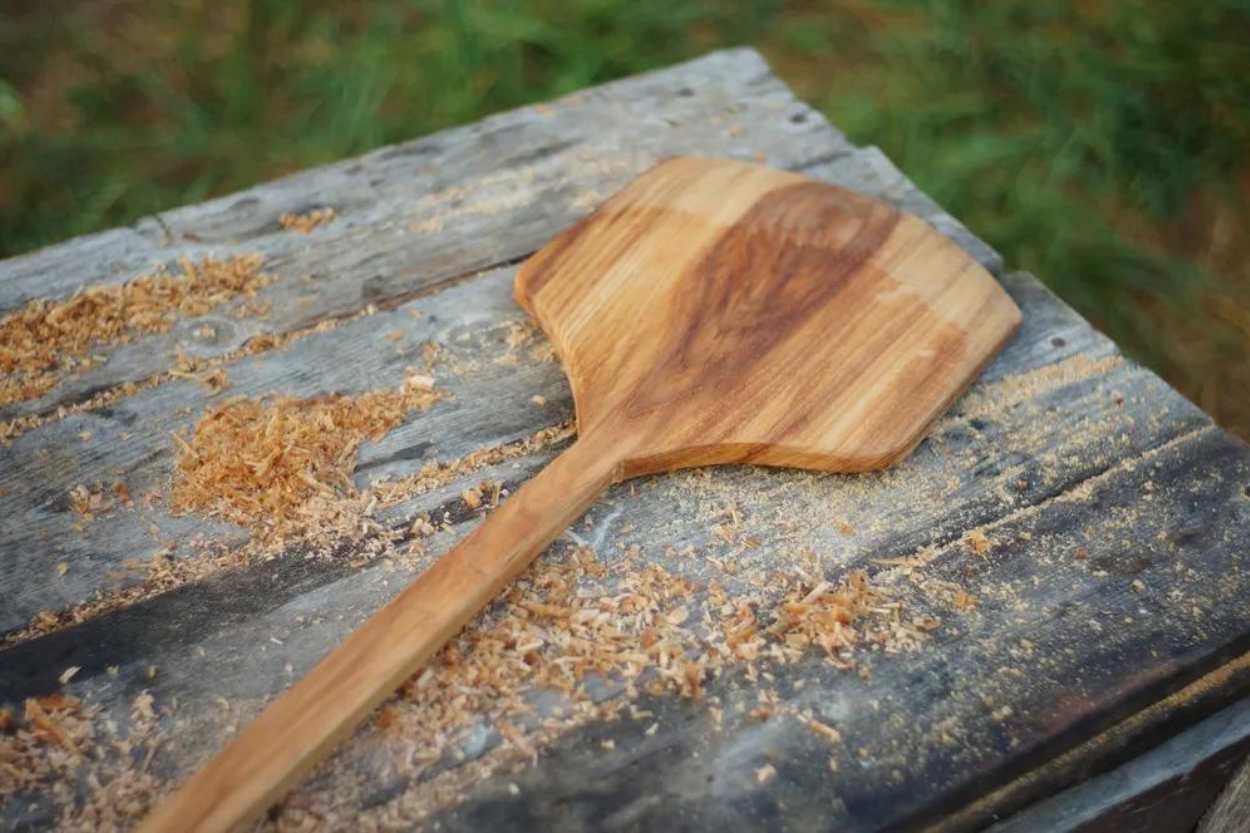
Wood is a natural material that looks great while being reasonably inexpensive —making it an attractive option when trying to maximize your budget. It’s also thick enough not to warp easily when exposed to a high heat source.
Plus, the grainy texture helps grip the food better, preventing pizza slices from sliding off. This makes it easy for home bakers.
Considerations for Choosing a Wood Pizza Peel
A wood pizza peel provides a more traditional and rustic touch to your pizza-making. It often serves as an aesthetically pleasing addition to any pizzeria or hobbyist’s kitchen.
The downside is that wood requires more vigilant care than metal. If you opt for a wooden pizza peel, follow the maintenance tips provided below.
Maintenance Tips for Wood Pizza Peels
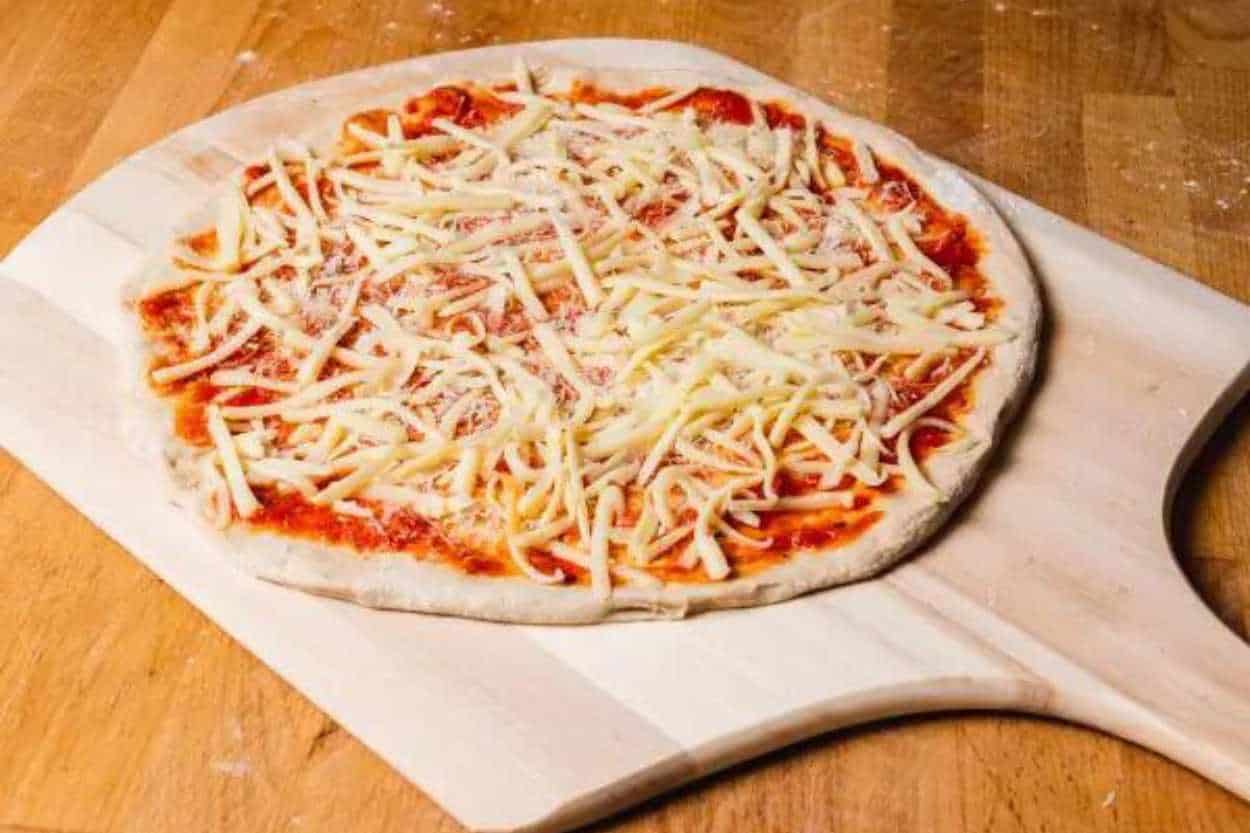
As stated, using a wood pizza peel comes with a list of maintenance you should do. It’s to keep the tool pristine and usable for a long time. You can maintain it by:
Season the Pizza Peel
Do your wood pizza peel a favor and season it before its first use! This not only helps protect it from moisture but also prevents it from absorbing odors or flavors from the pizza. You can do it by coating the wood with food-grade mineral oil and putting it in a high-heat oven for a few minutes.
Clean it Properly
If you season your wood peel properly, cleaning it should be an easy task. Remember that it does not need any scrubbing and dish soap. Simply running the wood under some hot water is enough.
Metal Pizza Peel Overview
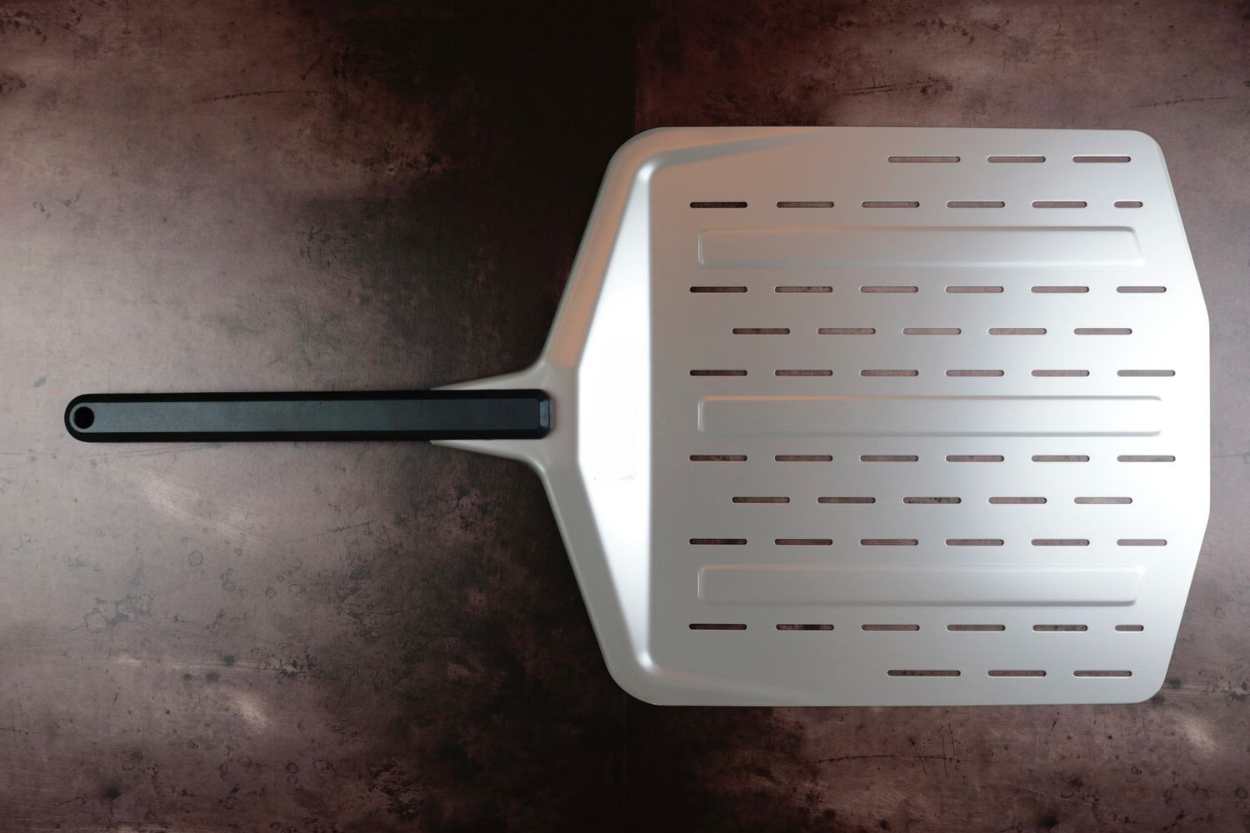
Although wood pizza peels have been a mainstay for many years, metal ones have become popular during the past years. Metal pizza peels are solid yet lightweight due to their use of aluminum or stainless steel.
Also referred to as ‘blades,’ they tend to be relatively thin but can handle the weight of bigger pizzas. Sliding under pizzas and quickly retrieving them from ovens also comes pretty easy, given the weight of the peel.
The carrying surface can come either in a solid or perforated design. This way, it will lessen the risk of the dough sticking.
Additionally, many other pizza peels are primarily made of metal. For example, modern round pizza peels are made with metal rather than wood.
It’s because of its functionality. Smaller round pizza peels are designed for rotating the pizza mid-cooking, so they must be small and lightweight.
Considerations for Choosing a Metal Pizza Peel
One of the primary considerations when choosing a metal pizza peel is that raw dough tends to stick to its flat surface. So, you will need to dust the pizza peel more than the wooden ones.
Maintenance Tips for Metal Pizza Peels
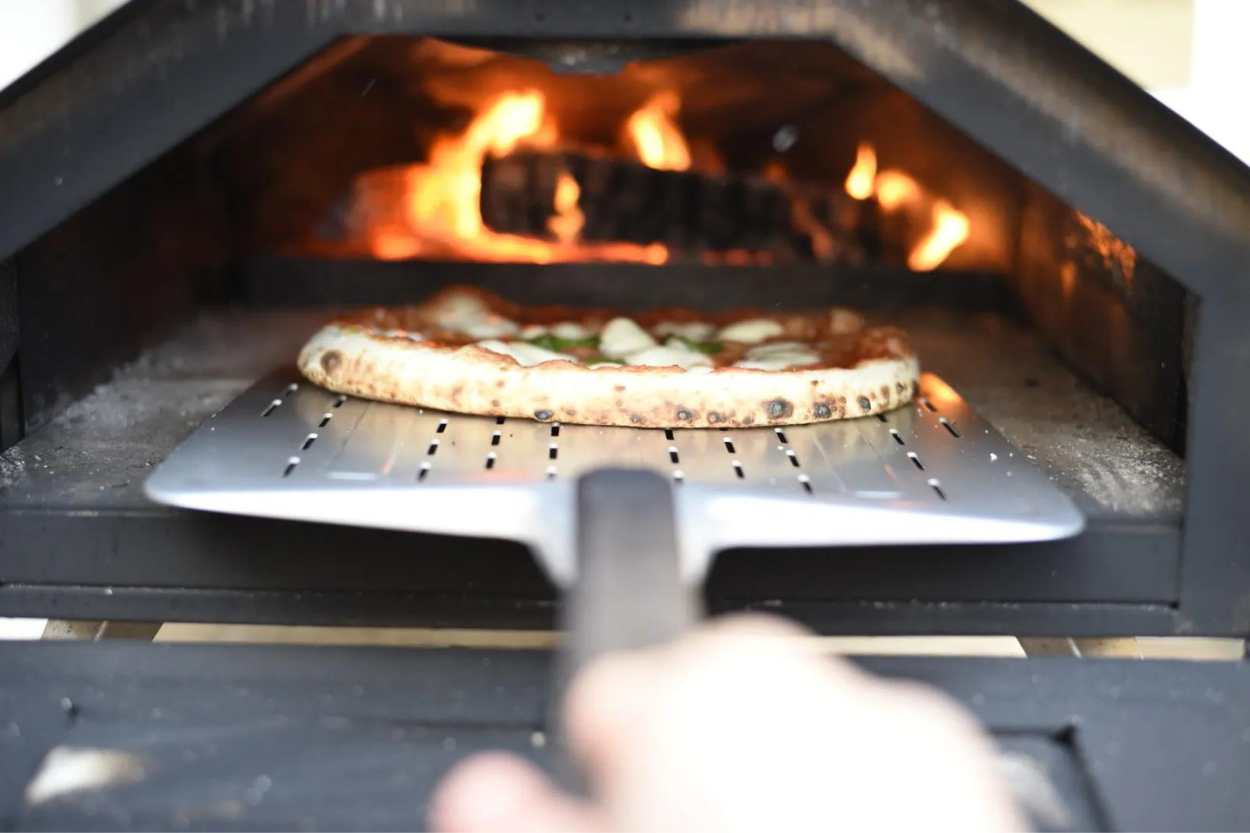
Here are some maintenance tips you can use for pizza peels.
Store it Properly
When it comes to metal, rusting is a big problem in maintaining the tool. So, keeping it dry and stored in a cool place should be the priority. This way, the pizza peel will not develop any rust. If you find any accumulated rust on the surface, clean off the area using a gentle scrubber and reapply some cooking oil to the peel’s surface. It would help re-season the peel.
Avoid High Heat
Whilst they are made to withstand high temperatures, extreme heat could ruin their structure. To protect them, try not to keep metal peels in hot environments for too long.
What’s the Difference between Wood and Metal Pizza Peel?
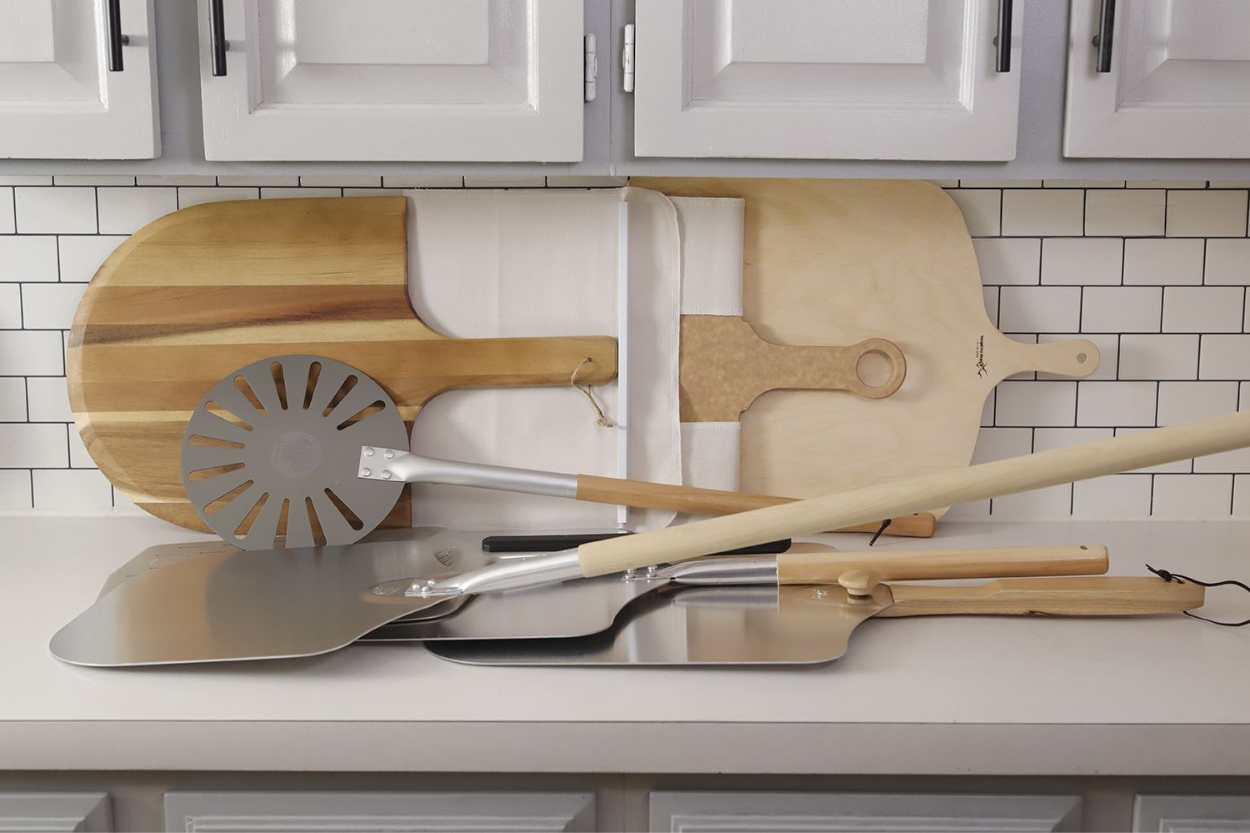
| Feature | Wood Pizza Peel | Metal Pizza Peel |
| Material | · Birch · Maple · Oak · Bamboo | · Aluminum · Stainless Steel · Carbon Steel |
| Weight | Heavier | Lightweight and Easy to Handle |
| Durability | More At Risk of Cracking and Warping | More Resistant to Cracking and Warping |
| Surface Texture | Has Natural Grooves for Non-Stick | Smoother, More Prone to Sticking |
| Thermal Conductivity | Low Conductivity | Higher Conductivity |
| Maintenance | Requires regular seasoning and oiling to prevent drying and cracking. | Generally easier to clean and maintain; less susceptible to moisture damage. |
| Aesthetic Appeal | Offers a rustic and traditional look, popular in wood-fired ovens. | Provides a modern and sleek appearance. |
| Price | More affordable. | Pricier. |
| Versatility | Suitable for both home and commercial use. | Commonly used in professional kitchens and pizzerias. |
| Special Considerations | Wood may absorb odors or flavors over time. | Metal may become very hot and may require protective gear while in use. |
Material Properties
The most glaring difference between these two types of pizza peel is their material properties. Being wood and metal, both have their different caveats to consider.
For example, wood pizza peels are mostly made with oak or bamboo. So, it offers a more rustic and general aesthetic appeal. You might even see one or two of this pizza peel as a décor to many pizzerias.
Metal, on the other hand, tends to be more industrial in look. It’s mostly made with stainless steel to keep the dough from sticking.
Surface Texture
The surface of wooden pizza peels tends to be thicker and somewhat uneven. This is especially true if you buy some very cheap ones.
Metal pizza peels, on the other hand, have a smoother surface. Which can help in easily sliding off the pizza.
Weight and Maneuverability
Wood tends to be heavier than metal due to its thickness, making it less maneuverable, with a higher risk of toppling the pizza while transferring out of an oven.
Metal pizza peels are usually lighter and allow more control over transfer. Low-friction material is also essential when transferring to help move the dough smoothly.
Durability
When it comes to durability, metal pizza peels last relatively longer than wooden ones. Also, it needs less maintenance, so it’s a staple to big pizzerias.
Wood vs. Metal Pizza Peel: Pros and Cons
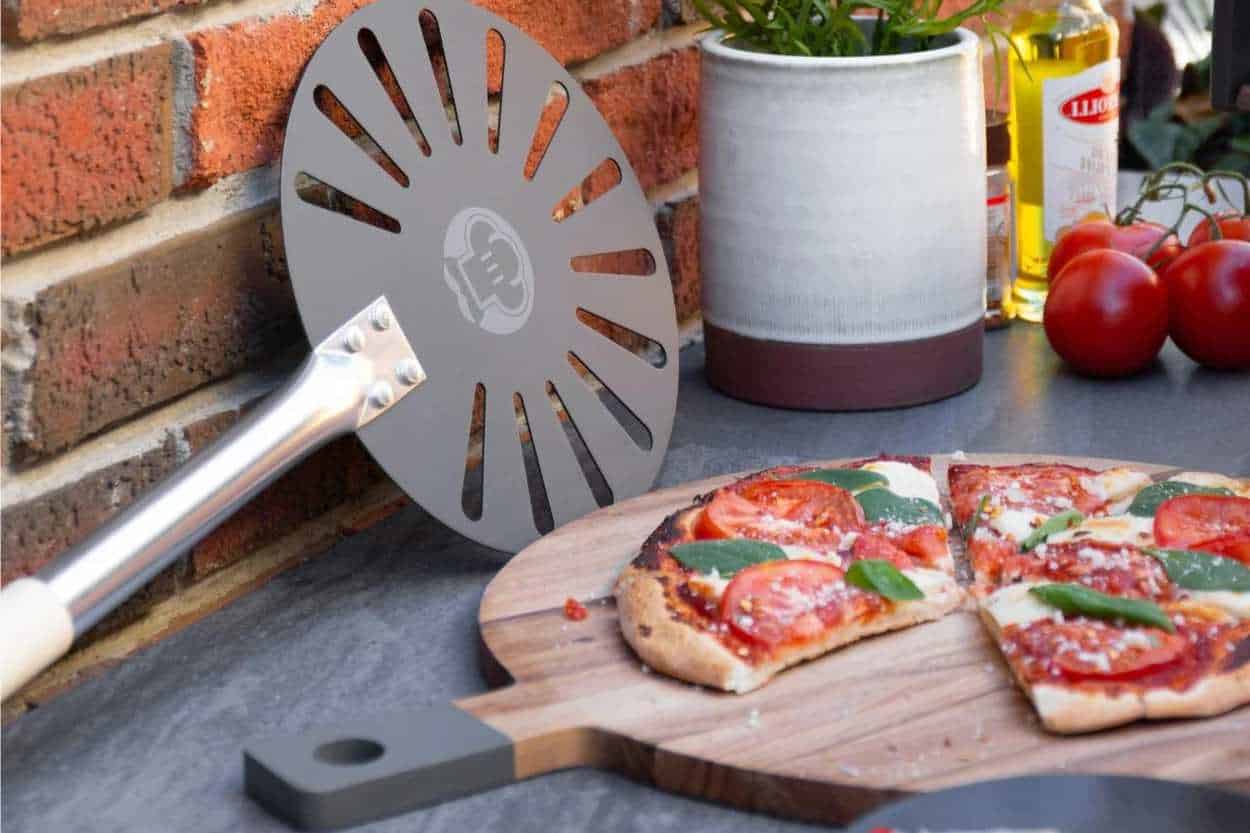
| Peel Type | Pros | Cons |
| Wood Pizza Peel | – Traditional and Rustic Appeal – Gentle on Delicate Pizza Crusts – Natural Non-stick Properties | – Requires Regular Maintenance – May Absorb Odors or Moisture – Slightly Heavier and Less Maneuverable |
| Metal Pizza Peel | – Excellent Heat Conductivity – Lightweight and Easy to Maneuver – Low Maintenance | – Can be Harsh on Delicate Dough – Prone to Sticking without Proper Flooring – Lacks the Aesthetic Appeal of Wood |
Wood vs. Metal Pizza Peel: Which is the One for You?
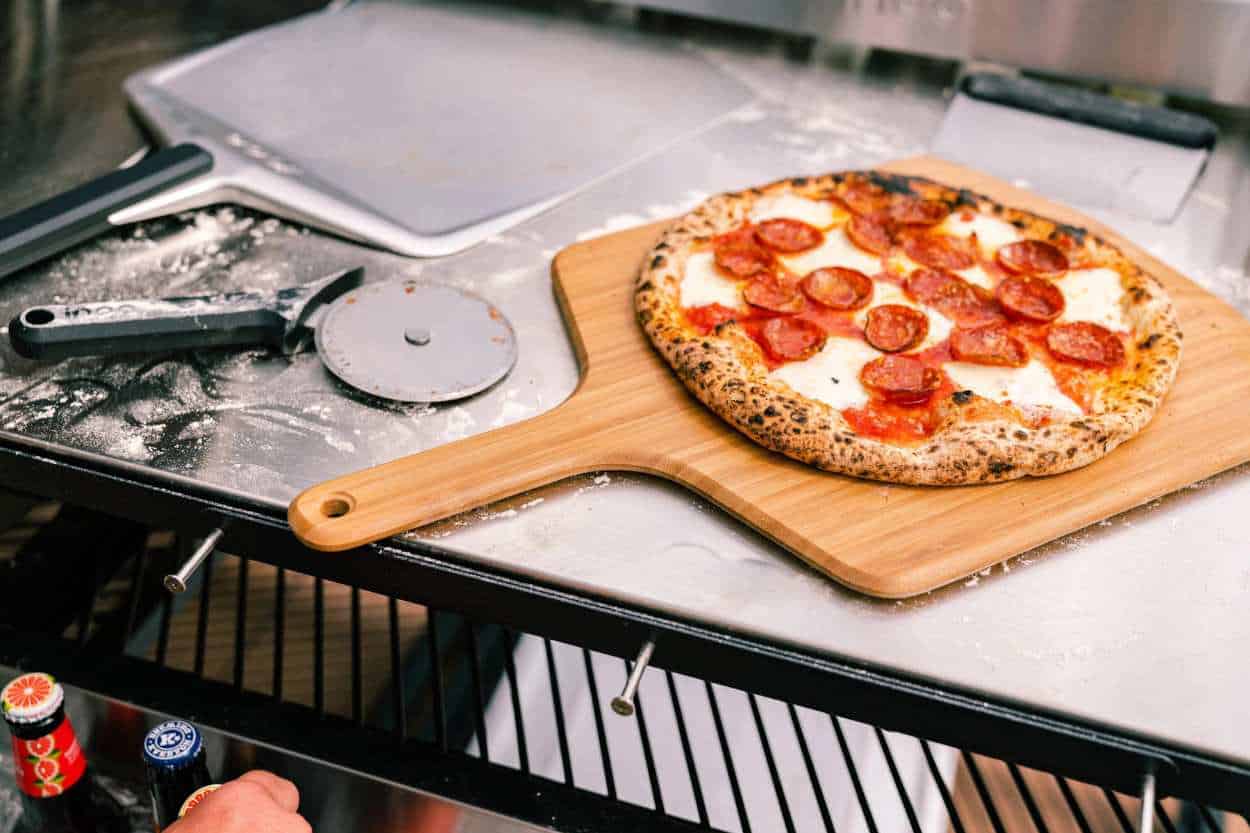
Here are some considerations you might know before choosing between the two.
Baking Frequency
Home cooks and pizzerias cook pizza at different paces. One produces more than the other. Wooden pizza peels are designed for infrequent use, so it’s good for home cooks. On the other hand, if you cook multiple pizzas a day, then metal pizza peels are the right choice.
Skill Level
If you enjoy using traditional methods, then a wood pizza peel might be the perfect choice. However, it does require more finesse and demands a bit more maintenance.
On the other hand, metal pizza peels offer a simpler experience that’s great for both beginners and advanced bakers. It’s because they’re so user-friendly and don’t require much upkeep.
Maintenance
Wood pizza peels may feature an excellent aesthetic. However, they do require more maintenance in terms of seasoning and upkeep. Alternatively, metal pizza peels are better suited for those seeking low-maintenance tools that only need a little attention. These often come with easy-to-clean surfaces and can make cleaning an efficient and nearly effortless task.
Budget
When it comes to pizza peels, the difference between wood and metal primarily comes down to price. Wood pizza peels may be a cheaper option due to their traditional appeal and range in price depending on the type of wood and level of craftsmanship. Metal pizza peels are usually pricier but also widely available.
In Conclusion
With these differences and similarities between wood and metal pizza peels, you now know the best option for you! So be sure to read carefully to have the best option based on your preferences and needs.
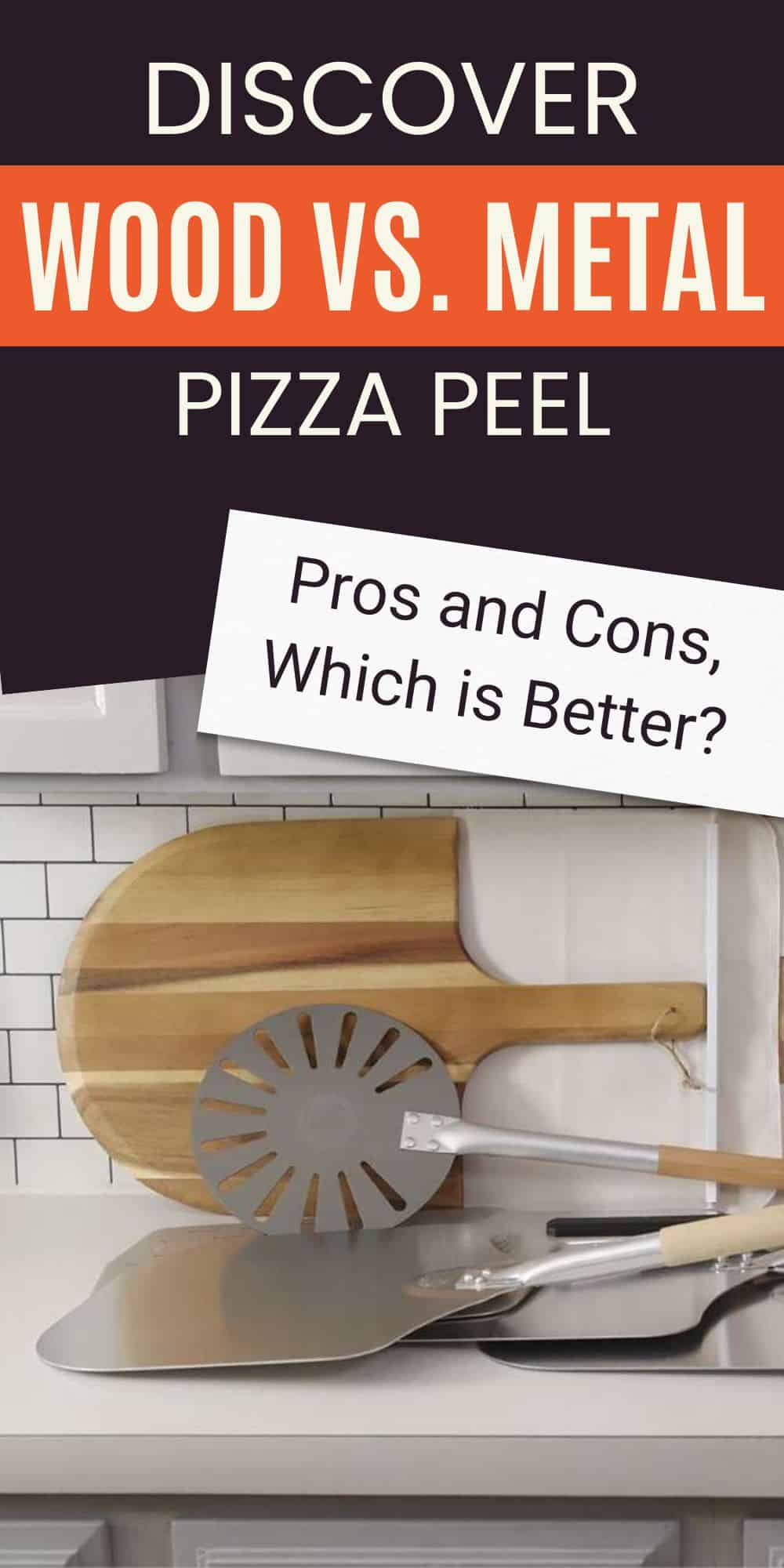

Barbara is an enthusiastic food-exploring person that goes through different culinary experiences. She got inspired by creating a pizza blog post after she tasted one of the best-selling pizzas in Toledo.